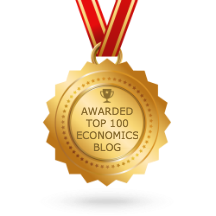New research suggests the actual tariff rates are well below what economists have suspected
By Konrad Putzier of The WSJ. Excerpts:
"tariffs being paid by importers are lower than advertised."
"the weighted-average tariff rate—the average of all tariffs, adjusted for import volume from each country—that month was around 9%. That number is well below the 12% rate that they had previously estimated based on White House announcements, and far less than what some others have estimated."
"more than half of U.S. imports were duty-free"
"many U.S. companies and consumers bought less from countries with higher levies" [although this still hurts consumers since it means that they bought less preferred items]
"importers switched to countries with lower tariffs or to domestic producers." [again, this that they bought less preferred items]
"the U.S. hasn’t collected tariffs on many goods—for now. In June, just 48% of U.S. imports were actually subject to tariffs, thanks to myriad exemptions"
"the actual rates importers pay are likely to rise in months to come"
"Barclays expects weighted-average tariffs to end up at around 15%, up from a current 10% and 2.5% last year."
"many U.S. companies are importing fewer goods facing high duties"
"But part of that, too, might be temporary. U.S. companies imported more early in the year to get ahead of tariffs, leading to lower imports in the following months. As inventories shrink, imports are likely to rise again."
"more companies say they are increasingly likely to pass tariffs on to their customers in the months ahead.
Many companies were slow to raise prices while they were waiting to see where levies would ultimately end up."
Related posts:
Are Businesses Absorbing the Tariffs or Passing Them On to Their Customers? (2025) (This one has supply and demand curves that show that businesses usually can't pass all of a tax like tariffs on to the buyers and that how much gets passed along depends on the price elasticity of demand for the different products)
Can Trump’s Tariff Offensive Deliver New American Jobs? (2025)
Americans Are Stockpiling Ahead of Trump’s Tariffs (2025)
Powell Warns of ‘Challenging Scenario’ for Fed as Trade War Rages (2025)
How Much Do Tariffs Raise Prices? (2025)
Politicians talk about creating manufacturing jobs but do people really want them? (2025)
How some of Trump's policies might affect the economy (2024)

No comments:
Post a Comment